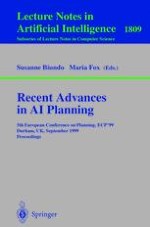2000 | Buch
Recent Advances in AI Planning
5th European Conference on Planning, ECP’99, Durham, UK, September 8-10, 1999. Proceedings
herausgegeben von: Susanne Biundo, Maria Fox
Verlag: Springer Berlin Heidelberg
Buchreihe : Lecture Notes in Computer Science
